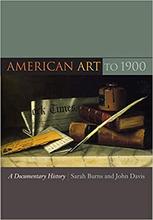More about Thomas Eakins
- All
- Info
- Shop
Works by Thomas Eakins

Contributor
It's always sunny in Philadelphia, where Thomas Eakins was born.
His dad was a writing master and calligraphy teacher, the latter of which gave Eakins a kick start to his career in artistry (it helped with line-drawing and perspective and stuff). He was a super sporty kid and eventually used his favorite activities as the subjects of his art. He studied drawing and anatomy at the Pennsylvania Academy of Fine Arts and attended anatomy and dissection courses at Jefferson Medical College. He even considered becoming a surgeon, but that’s hard and requires a lot of math, so he went on to study art in Europe instead, where he discovered his love of painting nudes.
When he came back from Europe, Eakins painted a bunch of rowing scenes. Like a lot. Eleven. That’s like eight too many. But apparently painting a contemporary sport was “shocking” at the time, so what do I know? Around the same time he was also painting Victorian interiors with his dad and sister as the subjects.
Eakins started volunteering as a teacher at the Pennsylvania Academy in 1876, and became a salaried professor two years later. By 1882 he was the director, despite his teaching methods being “unconventional.” Most notably, he loved to teach his students about ~all aspects~ of the human (and animal) figure. Dissections were involved-- super fun! His classes were supposedly “the most liberal and advanced” of the time. Oh and ladies, he totally believed that women could be artists too, so he gave them access to male models. Sounds like my kind of teacher ;)
Except I’d actually never want a teacher like him. Once, a female student asked about the movement of the male pelvis, so he took her to his studio and "gave her the explanation as I could not have done by words only." Ew. I guess he was overly excited that someone finally went to his office hours? But this kind of behavior is why he eventually was forced to resign in 1886. And he lost the favor of his in-laws during the whole debacle. Goes to show, being a perv never pays off. Ya heard?
Featured Content
Here is what Wikipedia says about Thomas Eakins
Thomas Cowperthwait Eakins (/ˈeɪkɪnz/; July 25, 1844 – June 25, 1916) was an American realist painter, photographer, sculptor, and fine arts educator. He is widely acknowledged to be one of the most important American artists.
For the length of his professional career, from the early 1870s until his health began to fail some 40 years later, Eakins worked exactingly from life, choosing as his subject the people of his hometown of Philadelphia. He painted several hundred portraits, usually of friends, family members, or prominent people in the arts, sciences, medicine, and clergy. Taken en masse, the portraits offer an overview of the intellectual life of contemporary Philadelphia of the late 19th and early 20th centuries.
In addition, Eakins produced a number of large paintings that brought the portrait out of the drawing room and into the offices, streets, parks, rivers, arenas, and surgical amphitheaters of his city. These active outdoor venues allowed him to paint the subject that most inspired him: the nude or lightly clad figure in motion. In the process, he could model the forms of the body in full sunlight, and create images of deep space utilizing his studies in perspective. Eakins took keen interest in new motion photography, a field in which he is now seen as an innovator.
Eakins was also an educator, and his instruction was a highly influential presence in American art. The difficulties he encountered as an artist were seeking to paint portraits and figures realistically as behavioral and sexual scandals truncated his success and challenged his reputation.
Eakins was a controversial figure whose work received little recognition during his lifetime. Since his death, he has been celebrated by American art historians as "the strongest, most profound realist in nineteenth- and early-twentieth-century American art".
Check out the full Wikipedia article about Thomas Eakins

















